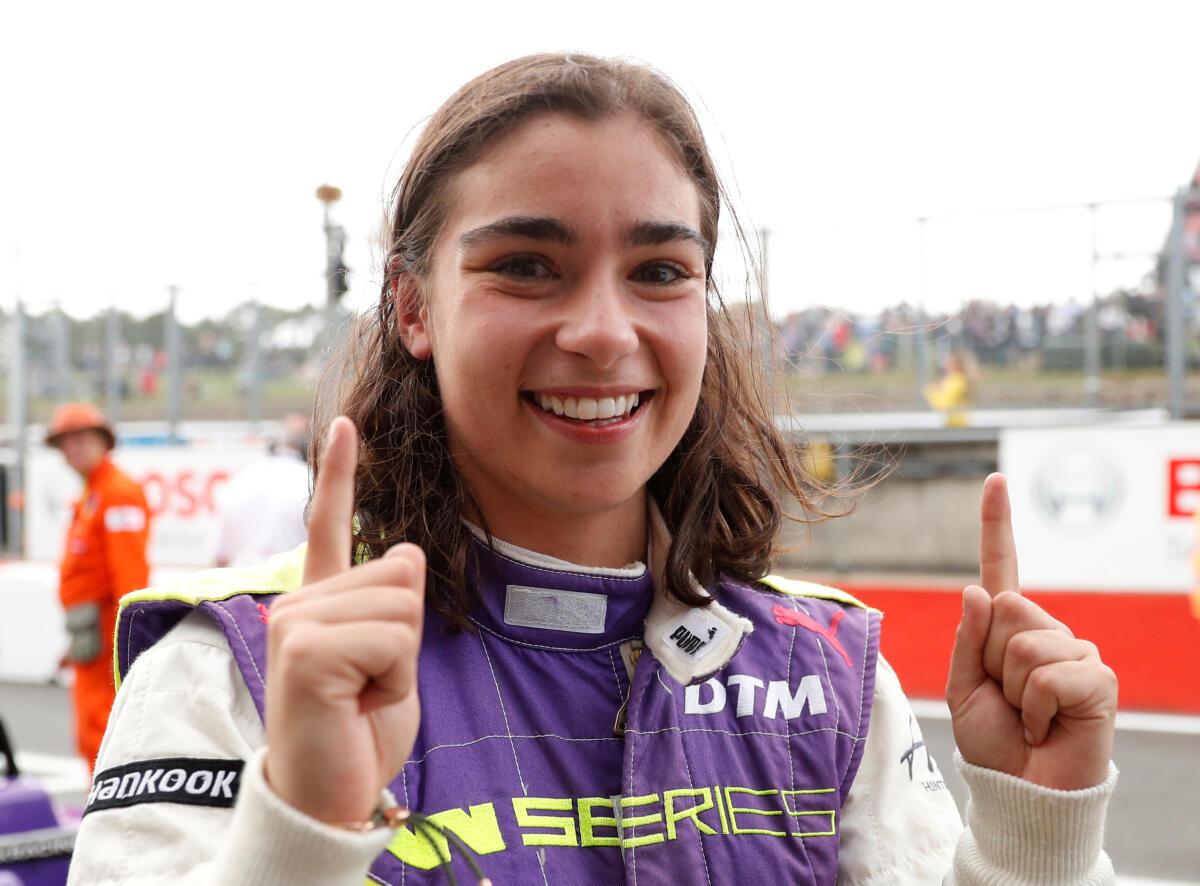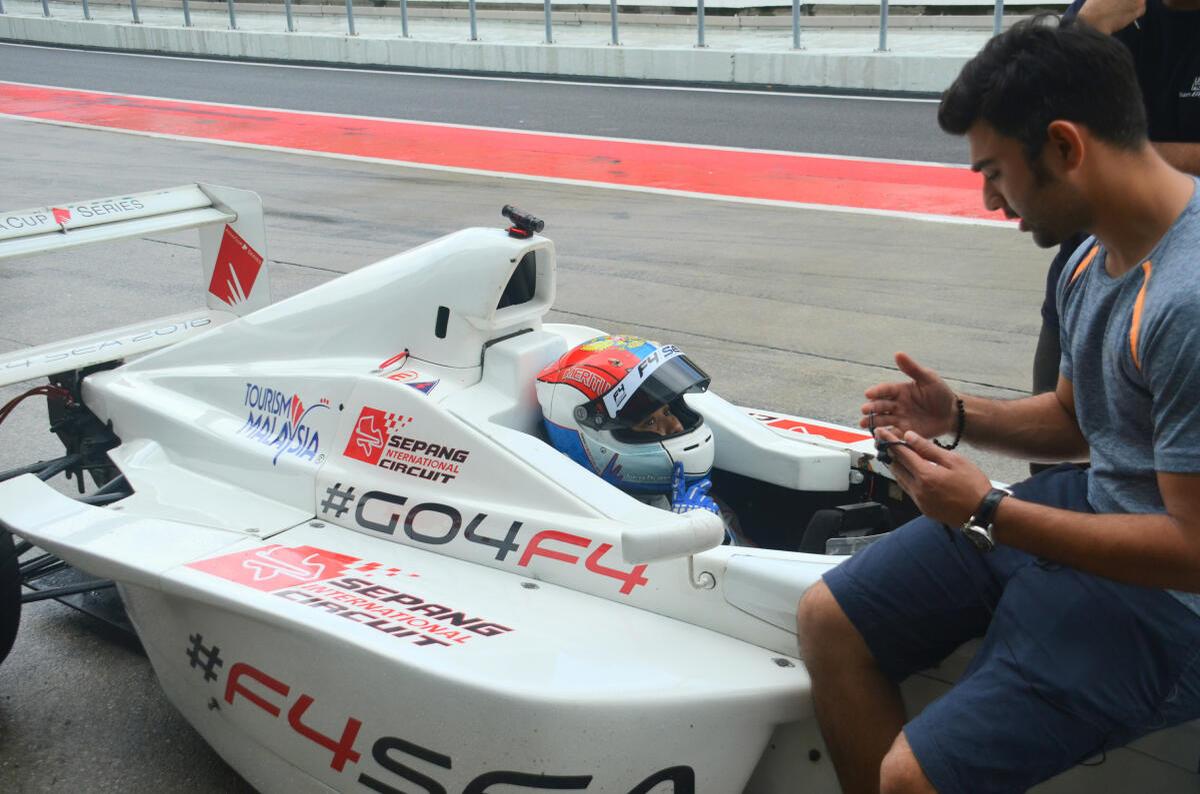Indian Racing Festival: How motorsport is helping close the gender gap in sport performance
Motorsport has long been a domain where power and precision converge, with Formula One and NASCAR leading the way in what has often been regarded as a largely male-dominated sport ecosystem.
However, this narrative is increasingly challenged by the growing presence and success of female drivers, as seen in the case of Jamie Chadwick, who became the first female Indy NXT winner in 15 years.

FILE PHOTO: Jamie Chadwick of Great Britain celebrates winning the W Series championship in 2019.
| Photo Credit:
REUTERS
FILE PHOTO: Jamie Chadwick of Great Britain celebrates winning the W Series championship in 2019.
| Photo Credit:
REUTERS
By putting them in race cars, particularly the single-make ones that the Indian Racing League (IRL) and Formula 4 field in their grid, it is becoming more apparent that women can be as fast, if not faster, than their male counterparts.
Gabriela Jilkova, one of six female drivers competing in the third season of the IRL, needed only one race to prove she has what it takes to challenge the rest.
Driving for Goa Aces JA Racing, she stood on the third step of the podium on Sunday in IRL’s Driver B race at the Madras International Circuit (MIC). She also bagged the Driver of the Day award for her performance.
ALSO READ | Indian Racing Festival: Finishing touches being applied to Chennai street race circuit
What was more impressive was that out of a grid of 12 cars that comprised seven male drivers, she finished ahead of four of them (one DNF).
The 29-year-old, however, is not new to this feat. With several single-seater championships under her belt, Jilkova said that she has been racing amongst boys since her karting days.
“Personally, I’ve mostly been competing with men. I started karting when I was five years old and then started doing local races, which I ended up winning maybe four or five times,” she told Sportstar.
The Czech driver, who returned to the IRL for the third time, has made rapid strides in the LMP3 and GT cars in the last few years. Jilkova reached a significant milestone in her career in 2023 when she was announced as Porsche’s driver for Formula E’s season 10 rookie test at Valencia.
She became the first female driver in seven years to get behind the wheel of a Formula E car – Porsche 99X Electric – in October last year. She was one of six rookies to be included in the development programme.
“It was an amazing experience. Porsche is so professional and I gained a lot of experience during that time. The car is different but it’s so cool and powerful to drive,” she said.
A month later, she was handed the role of simulator and development driver for the team in the upcoming season, working on the setup and development of the car. She also works as a driving coach on the side, and enjoys spending more time on the track, sharing her experiences with others.
ALSO READ | Hugh Barter produces overtaking masterclass to win F4 race; Alister Yoong triumphs in IRL
Jilkova, who has risen through the ranks after racing in various categories, said that a gender-neutral league helps drivers on the grid gain a lot of exposure.
“There are not just women on the grid. You have a mix of male and female drivers. You have a lot of really experienced drivers, like a winner of world racing, which makes a big difference,” she said.
“In leagues like the F1 Academy (a female-only and junior-level single-seater racing championship founded by Formula One), you compete with all female drivers and you can be in the top-three if you do well. But you still don’t know where you’re standing.
“The Academy is a great place for marketing, and promotion of women drivers is really good. But driver-wise and experience-wise, I don’t know if it puts you somewhere in terms of racing.
“It’s good but it feels like it’s like a small pit stop somewhere and then coming back. At some point, you need to go back and race between male drivers as well,” said Jilkova.
However, there was a different opinion voiced from the neighbouring garage of Fabienne Wohlwend, who was part of the now-defunct W series, an all-female single-seater racing championship that concluded after three seasons.
She finished merely two seconds behind Jilkova in the Driver B race, and also crossed the line ahead of her male competitors. In her third year of the IRL, Wohlwend felt that the time she spent racing in the W series helped turn her hobby into a profession.
Hailing from Liechtenstein, she started karting in Switzerland at the age of seven with her brother before competing at the national level. Wohlwend did a lot of races in Italy, Germany and around Europe before moving to Formula cars.
Part of the Ferrari Challenge in 2017, she was the first-ever female world champion racing driver, which was a big boost to her dream of entering the big league.
According to Wohlwend, the W series came along at the right time and ‘saved her career’.
“I was working full-time at the Liechtenstein bank. The W series gave me many opportunities. It was the three best years of my life. I was travelling all around the world and racing.”
The W series, however, failed to sustain itself due to a lack of funding. “We didn’t have new investors coming in and believing in girls. So, hopefully, there are more now. It’s great to see that Formula One teams are now invested in F1 Academy. It gives young karting girls a future and a chance into the racing world,” Wohlwend told Sportstar.
Her W series stint featured one pole position and six podium finishes with her best season finish being sixth. Wohlwend said that many people thought the series got separated from the rest but she didn’t think of it that way.
ALSO READ | Jaden Pariat wins Formula 4, Jon Lancaster records first IRL win in opening IRF round
“How else do you want to push 20 girls? You put them all together and they can learn from each other. Then when you go out into the normal racing world, you’re more ready, faster and capable. So, I think that was the best thing,” Wohlwend said.
“There were a lot of female role models and even right now here in India, we have so many young girls racing in IRL and F4. That’s big progress,” said the driver of the Rahr Bengal Tigers team.
One such young Indian talent, who is part of the Formula 4 Indian Championship (F4IC), is Mira Erda. The 23-year-old Gujarat-based racer has built her career by racing on Indian tracks and winning international championships.
She began karting at the age of nine with her brothers on their family-owned track in Vadodara. From there on, she started racing professionally and became India’s youngest and only female Formula 4 BMW driver. She also became the first Indian female to win the Formula 4 in the South East Asia championship held in Malaysia in 2019.
“It’s been a dream, looking at those cars and being able to drive in India. It’s a huge opportunity that I’ve got and I’m making the most of it,” said Mira, who finished P10 in the first F4IC race, scoring a valuable FIA Super License point.

FILE PHOTO: India’s racing star Armaan Ebrahim giving tips to Mira Erda of Vadodara in 2017.
| Photo Credit:
SPECIAL ARRANGEMENT
FILE PHOTO: India’s racing star Armaan Ebrahim giving tips to Mira Erda of Vadodara in 2017.
| Photo Credit:
SPECIAL ARRANGEMENT
It was only last week that Mira got her first-ever win in a single-seater after winning a race in the Formula LGB 1300 category of the MRF MMSC FMSCI Indian National Car Racing Championship. She also became the first female winner in this category, which had more male drivers.
“I love driving in a category where both men and women are together because that’s where the real performance comes out,” the Chennai Turbo Riders driver told Sportstar.
“Yes, we have a lot of championships that are only women-centric. That is also one way of promoting women because it’s so hard to get those opportunities.
“We get to prove ourselves there and then jump back into the normal categories, but in India, we do not have such things,” said Mira, who has a ‘you can’ tattoo just above her left thumb, a testament to her burning passion.
She is joined by quite a few other young, talented and experienced drivers in the Indian Racing Festival (IRF) line-up who are making each race count.
With any differences they may have with their male counterparts being nullified when women enter the cockpit and secure their helmet, these races are proving to be a demonstration of talent and skill, transcending gender and redefining the world of motorsport.



